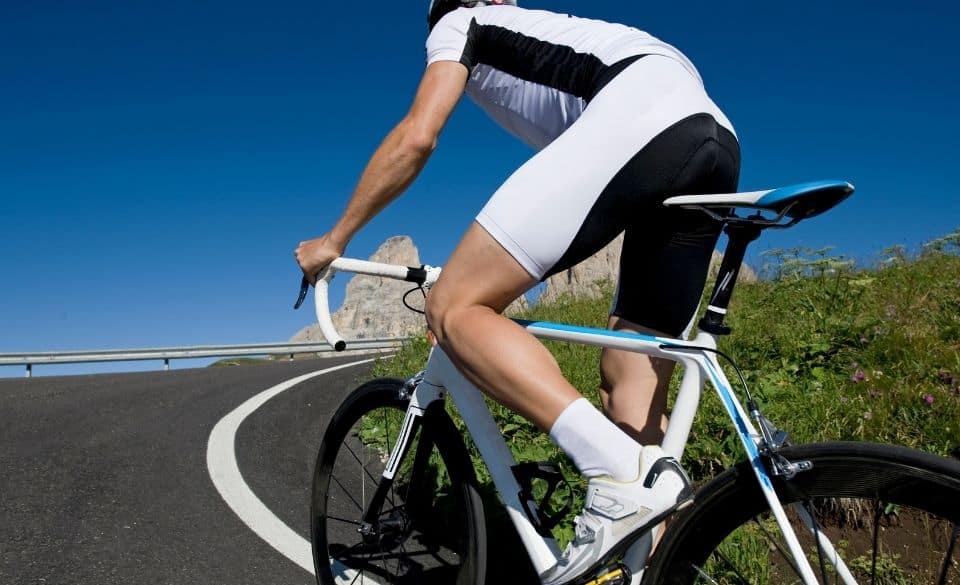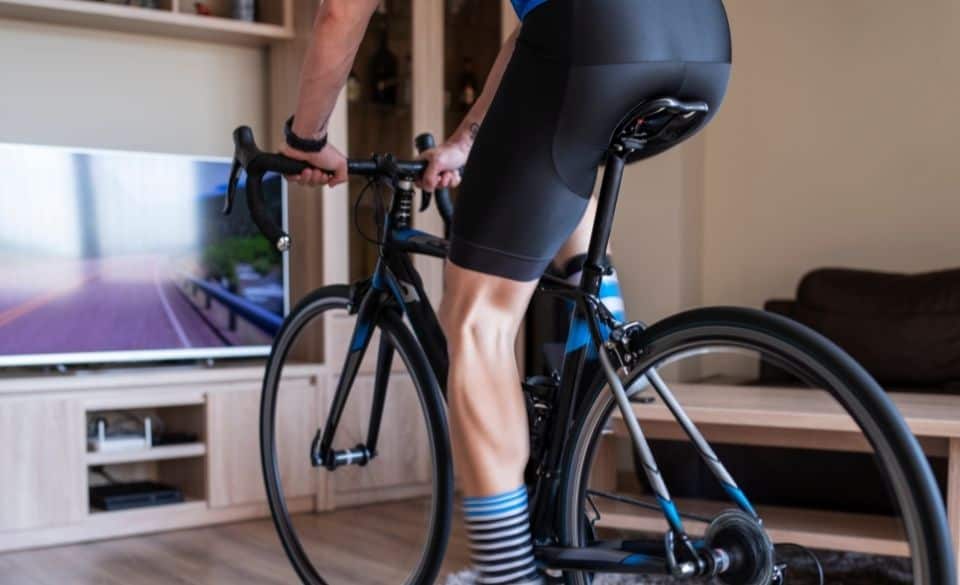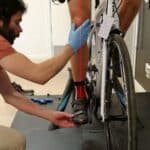
Twisted Pelvis & Hip Position While Cycling – A Complete Guide
Page Contents
Unfortunately, more than 90% of males and females feel the effects of a twisted pelvis cycling each day. While they might not know it directly, most cyclists sit on their saddle with a rotated pelvis. That means the body is out of alignment and places undue stress on other areas like the back, hips, knees, and neck.
However, alignment is not the only thing to be worried about. Decreased power and efficiency is another reason to make sure you are sitting correctly on a bike.
So what should you do if you think you have a twisted pelvis while cycling? Keep reading to find out.
Twisted Pelvis While Cycling – A Complete Guide
A twisted pelvis while cycling can cause problems for any cyclist. If left untreated, it can range from discomfort to lack of power and even injuries. Luckily it can be addressed if treated early by a bike fitter. But what causes a twisted pelvis when cycling?
Below are the most common things that force a cyclist to rotate their pelvis when cycling.
– Saddle too high
– Leg length discrepancy
– Incorrect saddle choice
– Saddle fore-aft position
– Bias towards one side
– Muscular imbalance
However, it is normal for people to favor one side of their body to varying degrees when riding. That can often give the impression that they are riding with a twisted pelvis. However, this may not always be the case. They are merely favoring the stronger leg. Although if you are one of these people, try to spend time building equal strength between both legs as this will help prevent rotation of the pelvis when you are favoring one leg.
Luckily for most people, a twisted pelvis while cycling is mostly caused by incorrect saddle height (overreaching) or incorrect fore-aft and saddle width. You see, when you are riding a saddle that is either too wide or too narrow for you, your sit bones aren’t supported under load. That means during the downstroke the pelvis is more susceptible to movement, especially at higher intensities.
And that goes the same for your saddle’s fore-aft position. If you have the correct saddle width but the fore-aft is wrong, you will be forced into a position where the pelvis isn’t supported (middle of the saddle). You may also find yourself constantly moving around on the saddle, which can also cause you to move to the side you favor to create some temporary stability.
If you are using a double-sided power meter, it can help to give you some understanding of the power generated by each leg. Analyzing the data can help you understand any imbalances or position issues you may have. If you don’t have access to a double-sided power meter, speak with your local bike fitter as they may be able to see if you are sitting offset on the saddle with a pressure mapping tool.
The Dangers of Cycling Muscle Imbalance
If you are sitting off to one side or feel that your pelvis is twisted, you may be causing muscle imbalances to form.
Cycling muscle imbalance is often related to pelvis symmetry. If you are sitting off to one side of the saddle you will naturally be working muscle groups on one side more than the other. That causes muscle groups of one side to become stronger than the other.
While most people have small muscular imbalances, if left untreated can cause the body’s symmetry to change and force you to start favoring the stronger side, often placing excess stress and future overuse injuries.
Hip Position & Pelvic Symmetry While Cycling
Hip position while cycling is one of the most important aspects of your position on a bike. That means that setting up your position largely dictates how good your pelvic symmetry while cycling will be.
While hip position changes between road and time trial bikes, both require a position that keeps pelvic symmetry underload.
Some simple ways to check if your hip position is stable while cycling is to place your bike on an indoor trainer and film from behind, then look for any rotation of the pelvis. You can also use a pressure mapping tool to check if both sides have similar pressure on the saddle. Unfortunately, pressure mapping tools aren’t easy to find so we recommend filming to make sure your aren’t twisting, rotating, or dropping your hip when cycling.

Right Side Bias In Cycling – What You Should Know?
Since more than 90% of cyclists tend to favor one side, and nearly 90% of the population are right-handed, it’s common for many cyclists to be right side bias in cycling. But what should you do in this case?
First, you need to understand why you are biased towards the right side. Is it because the right side is stronger? Or is it because your right side has better mobility?
Either way, focusing on a dedicated strength and mobility plan will help create a balance between both sides. If you can replicate both the strength and mobility of the right to the left, naturally you will end up not favoring one side.
But while you’re focusing on building strength and mobility on the left side, make sure you see your local bike fitter who can make adjustments to help the body keep inline on the bike while you work on balancing out the body.



